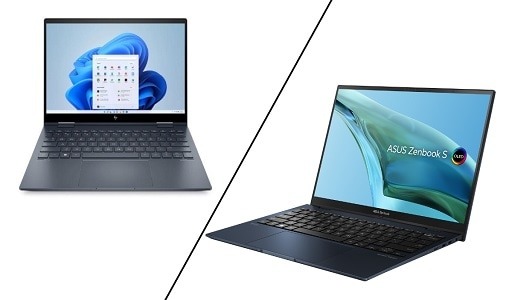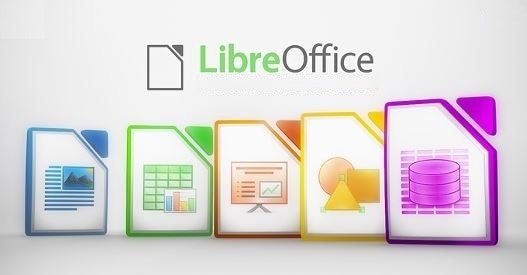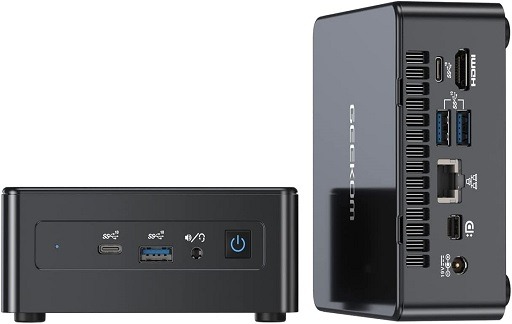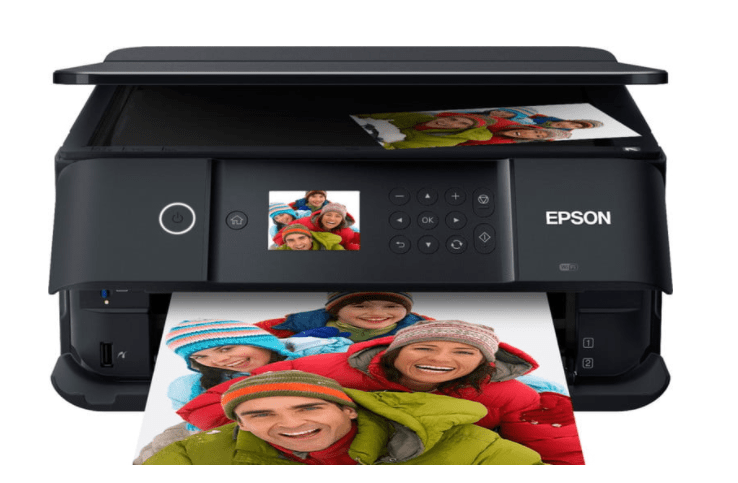The HP Envy x360 13 convertible 2-in-1 has excellent build quality, an awesome display, fine performance, and fine battery life; we love the HP Envy x360 13 for these reasons. When you consider that it starts at $700, it’s tough to find a better laptop than this one.
The Envy is challenged by the Asus ZenBook S 13 Flip, a convertible laptop that is very similar to the Envy in many ways. However, the fully configured version costs an additional $500. Does it justify spending the additional cash?
The HP Envy x360 13 is available in a variety of configurations, the most basic of which can be purchased for just $700 and comes equipped with a Core i5-1230U processor, 8GB of RAM, a 512GB solid-state drive, and a WUXGA IPS display. That is a steal for a fantastic laptop that falls somewhere between the midrange and the premium price points. Even with an upgraded configuration that includes a Core i7-1250U processor, 16 GB of RAM, a 1 TB solid-state drive, and a 2.8K OLED display, the total cost is only $1,100. A laptop with such a high-quality configuration can be purchased for that low of a price.
The Asus ZenBook S 13 Flip is only available in a single configuration, and unfortunately, it is not currently for sale online. A 2.8K OLED panel, 16GB of RAM, a 1TB solid-state drive, and a Core i7-1260P cost a total of $1,500. The Envy has comparable hardware, but the ZenBook costs an additional $500, making it a very high-end alternative to consider.

Specifications and configurations
| HP Envy x360 13 | Asus ZenBook S 13 Flip | |
| Dimensions | 11.75 inches x 8.46 inches x 0.63 inches | 11.67 inches x 8.26 inches x 0.59 inches |
| Weight | 2.95 pounds | 2.43 pounds |
| Processor | Intel Core i5-1230U Intel Core i5-1250U |
Intel Core i7-1240P Intel Core i7-1260P |
| Graphics | Intel Iris Xe | Intel Iris Xe |
| RAM | 8GB LPDDR4x 16GB LPDDR4x |
8GB LPDDR5 16GB LPDDR5 32GB LPDDR5 |
| Display | 13.3-inch 16:10 WUXGA (1920 x 1200) IPS 13.3-inch 16:10 WQXGA (2560 x 1600) IPS 13.3-inch 16:10 2.8K (2880 x 1800) OLED |
13.3-inch 16:10 2.8K (2880 x 1800) OLED |
| Storage | 512GB PCIe SSD 1TB PCIe SSD |
512GB PICe 4.0 SSD 1TB PCIe 4.0 SSD |
| Touch | Yes | Yes |
| Ports | 2 x USB-C4 with Thunderbolt 4 2 x USB-A 3.2 Gen 2 1 x 3.5mm audio jack 1 x microSD card reader |
2 x USB-C with Thunderbolt 4 1 x USB-A 3.2 Gen 2 1 x 3.5mm audio jack 1 x microSD card reader |
| Wireless | Wi-Fi 6E and Bluetooth 5.2 | Wi-Fi 6E and Bluetooth 5.2 |
| Webcam | 5MP with infrared camera for Windows 11 Hello | 1080p with infrared camera for Windows 11 Hello |
| Operating system | Windows 11 | Windows 11 |
| Battery | 66 watt-hours | 67 watt-hour |
| Price | $700+ | $1,500 |
| Rating | 4.5 out of 5 stars | 4 out of 5 stars |
Design
Both the Envy x360 13 and the ZenBook S 13 Flip are offered in Natural Silver and Space Blue, with our review focusing on the latter option. The ZenBook S 13 Flip is also offered in Refined White and Ponder Blue. If you put them next to each other, it will be very difficult to tell the difference between them. Both of them have understated designs with straightforward lines, and they resemble a wide variety of another convertible 2-in-1s measuring 13 inches. That is not a problem because they are both lovely notebooks to look at.
They are both constructed very well, and neither one of them bends, flexes, or twists in any way. The magnesium-aluminum alloy that the ZenBook is constructed of is notably more rigid than the materials used in the construction of the vast majority of other laptops. An incredible effort was put in by Asus to ensure that the all-aluminum ZenBook is just as sturdy as the all-aluminum Envy. Additionally, the hinges on both worked very well, allowing for simple opening even while the display was held in clamshell, tent, media, or tablet modes respectively.
However, the keyboard on the Envy x360 13 was a little bit quicker and more precise than the one on the other laptop. Both laptops had excellent keyboards, with good key spacing, large keycaps, and a consistent feel. Both touchpads were responsive and accurate, and the Envy’s keyclicks were confident despite their relative lack of noise. However, the touchpad buttons on the ZenBook were far too stiff and extremely uncomfortable to use, despite the fact that the inclusion of the NumberPad 2.0 LED numeric keypad was a welcome addition. Both of these devices featured responsive touch displays that were also compatible with the active pens that were included. Both laptops worked adequately for writing.
Both laptops measured 13.3 inches diagonally and had 16:10 aspect ratio displays. The displays’ surrounding bezels were roughly the same size on both machines. The ZenBook came in significantly less heavy at 2.43 pounds as opposed to 2.95 pounds, and it was also slightly thinner at 0.59 inches as opposed to 0.63 inches. Because of this, using it as a tablet was a more pleasant experience.
Both were well-equipped for 13-inch machines, but the Envy had one more USB-A port than the other one. Connectivity was nearly identical between the two machines. Both had the most recent version of wireless connectivity.
Last but not least, both models featured webcams with a high resolution that worked exceptionally well for video conferencing, although HP’s model included a few more features. Both have infrared cameras, allowing them to support Windows 11 Hello’s facial recognition features.
HP Envy x360 13 vs. Asus ZenBook S 13 Flip: Performance
The Intel 12th-generation U-series CPUs used in the Envy x360 13 have a power consumption of 9 watts, and the model that we tested was the Core i7-125oU, which has 10 cores (two Performance and eight Efficient) and 12 threads. When compared to the 28-watt Core i7-1260P processor found in the ZenBook S 13 Flip, which has the same number of cores and threads, this processor is theoretically much slower. It was discovered that the ZenBook was, in fact, faster, albeit not by a particularly large margin. It achieved the best results in our multi-threaded CPU-intensive Handbrake and Cinebench R23 benchmarks, although the gaps between them aren’t particularly large.
When it comes to demanding productivity tasks, neither will feel significantly faster than the other, and neither will be ideal for intensive creative workflows.
| HP Envy x360 13 2022 (Core i7-1250U) |
Asus ZenBook S 13 Flip (Core i7-1260P) |
|
| Geekbench 5 (single/multi) |
Bal: 1,435 / 7,285 Perf: 1,460 / 7,288 |
Bal: 1,602 / 8,559 Perf: 1,639 / 8,923 |
| Handbrake (seconds) |
Bal: 136 Perf: 138 |
Bal: 132 Perf: 117 |
| Cinebench R23 (single/multi) |
Bal: 1,504 / 7,436 Perf: 1,504/ 7,441 |
Bal: 1,583 / 7,595 Perf: 1,614 / 9,220 |
HP Envy x360 13 vs. Asus ZenBook S 13 Flip: Display
Both of these laptops have 13.3-inch OLED screens with a resolution of 2.8K (2880 by 1800), but after comparing them, we found that the display on the Envy x360 was a little bit brighter, had higher contrast (not that you’d notice with OLED), and had greater accuracy. However, both were quite impressive presentations. There are more display alternatives available for the Envy x360 13, including IPS ones with resolutions of 2560 x 1600 and 1920 x 1200, which would result in longer battery life.
| HP Envy x360 13 (OLED) |
Asus ZenBook S 13 Flip (OLED) |
|
| Brightness (nits) |
391 | 337 |
| AdobeRGB gamut | 98% | 97% |
| sRGB gamut | 100% | 100% |
| Accuracy (DeltaE, lower is better) |
0.72 | 1.02 |
| Contrast ratio | 29,420:1 | 23,590:1 |
HP Envy x360 13 vs. Asus ZenBook S 13 Flip: Portability
As was said earlier, the width and depth of both laptops are roughly equivalent, but the Zenbook is noticeably more slender and weighs much less. Tablet mode makes it more convenient to use, but when you switch to clamshell form, you won’t notice as much of a difference between the two laptops.
In each of our tests, the battery life was superior to that of the less powerful Envy x360 13 by around an hour. In light of the nearly identical level of performance, HP’s advantage here is the additional hour of battery life it offers.
| HP Envy x36 13 2022 (Core i7-1250U) |
Asus ZenBook S 13 Flip (Core i7-1260P) |
|
| Web browsing | 9 hours, 30 minutes | 8 hours, 38 minutes |
| Video | 14 hours, 14 minutes | 13 hours, 16 minutes |
| PCMark 10 Applications | 12 hours, 48 minutes | 11 hours, 18 minutes |
Comparable in every respect, with the exception of cost
There is not much of a difference between these two laptops in terms of their designs, the quality of their builds, their performance, or the quality of their displays. The Envy x360 13 has a touchpad that is superior, and it has a slightly longer battery life than its predecessor, but that’s about it.
The price is where you’ll see the most significant variation. The Envy can be purchased for as little as $700.00 with a machine that is nicely configured for productivity users, and at the very most, you will spend $1100.00 for a laptop that is very well configured. The only configuration of the ZenBook that can be purchased is one that costs an additional $500 compared to the most expensive Envy model, and there is nothing to justify the increase in price. This competition is won by the Envy x360 13 laptops.
Would you like to read more about Asus ZenBook S 13 Flip vs. HP Envy x360 13-related articles? If so, we invite you to take a look at our other tech topics before you leave!












